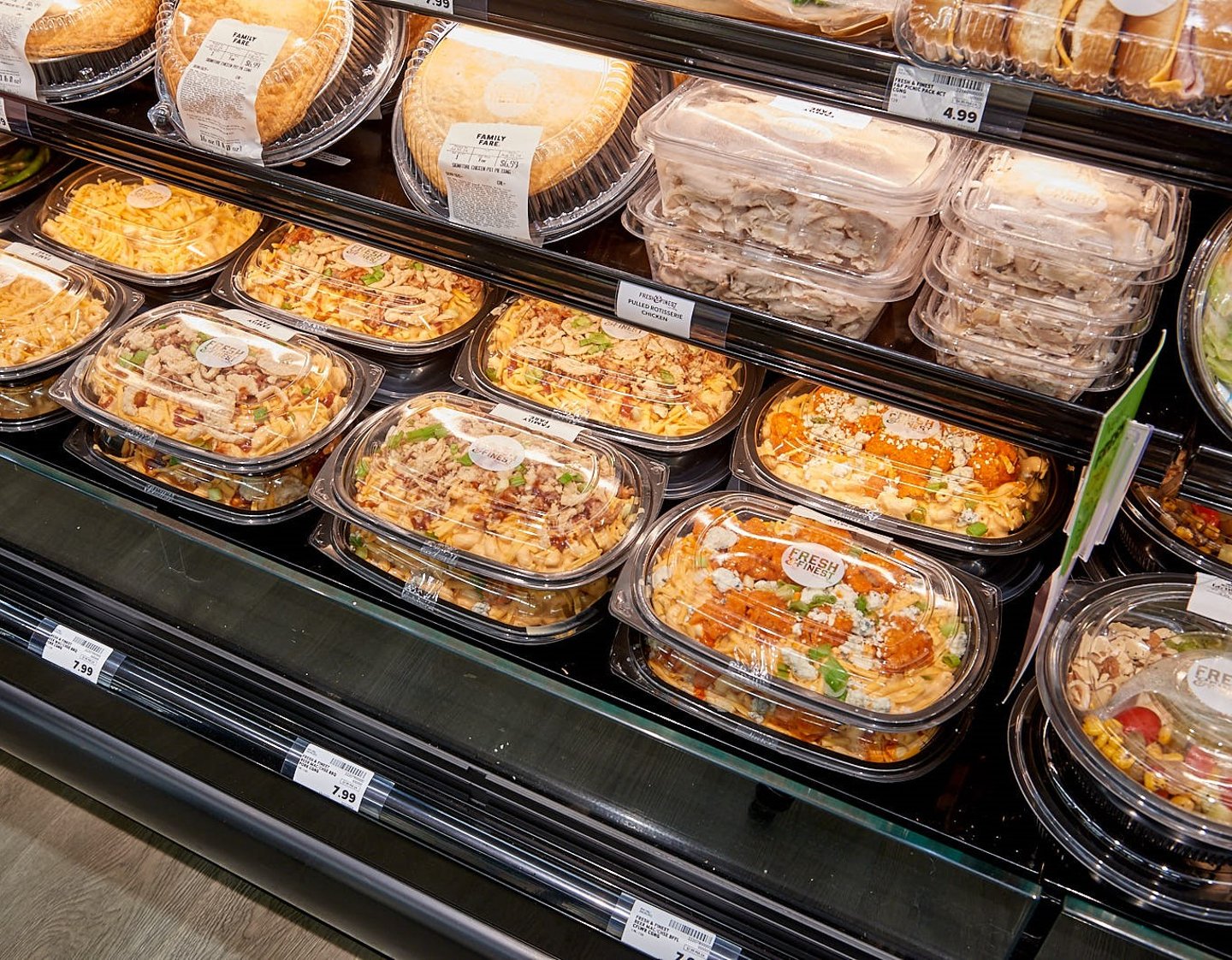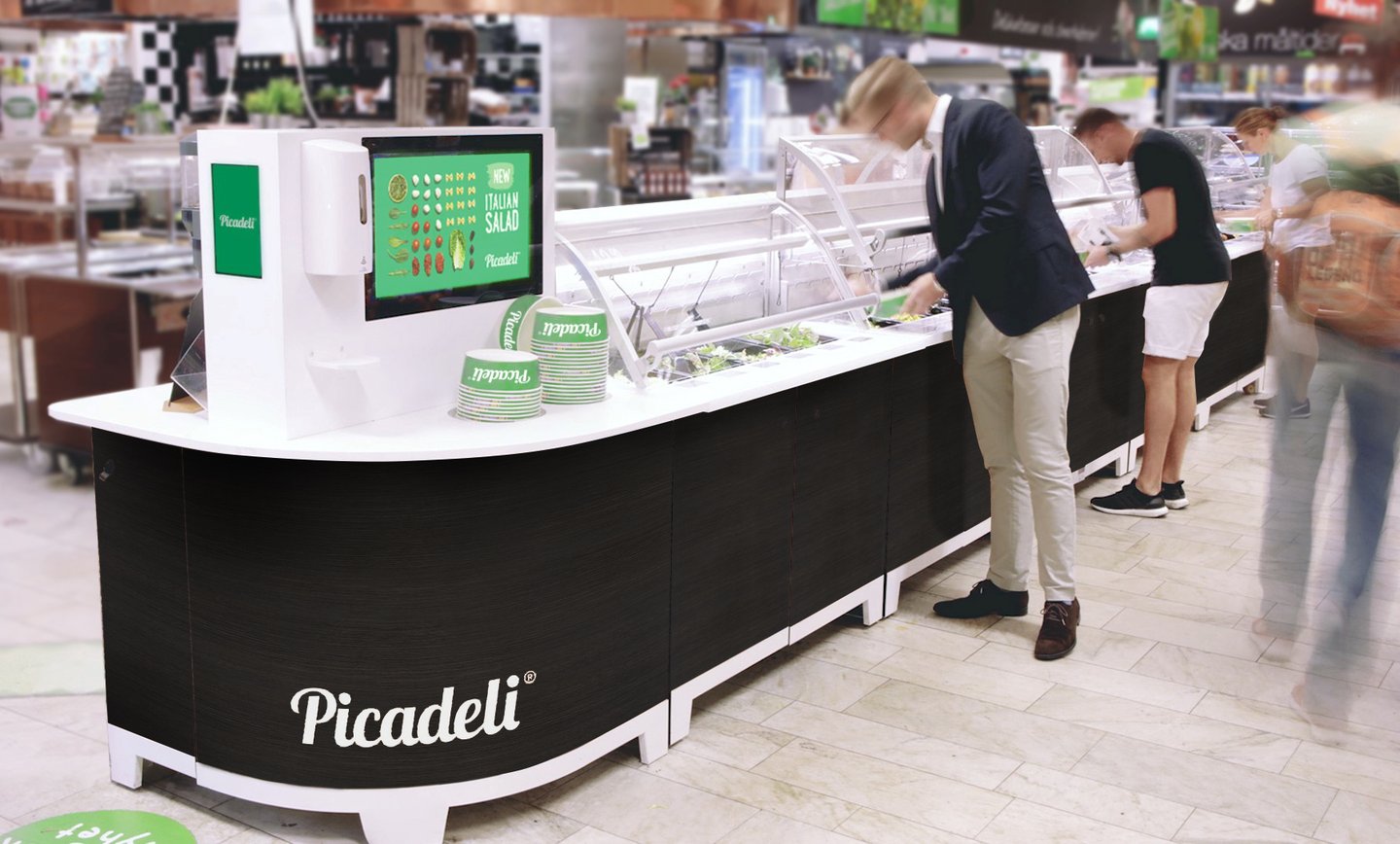When Fast Food Is Good Food
The United States is a world leader in economics, military might and political influence. It also dominates fast-food consumption, with an annual expenditure of $160 billion, according to WorldPopulationView.com. Thirty-seven percent of U.S. residents eat fast food daily, contributing to obesity and other health issues. But while some consumers are dedicated fast-food fans, many want healthy prepared foods that are convenient, satisfying and affordably priced.
Not all supermarkets’ deli and prepared food departments are meeting these needs. While 56% of consumers want better-for-you options, just 26% are “very satisfied” with current offerings, notes FMI – The Food Industry Association. Many products are fried, battered or cream-based, as well as high in salt, fat and calories. On the bright side, Arlington, Va.-based FMI says that most shoppers view deli/prepared foods as a “good value” compared with quick-serve or fast-casual fare.
[RELATED: Ready-Made Meals Resonating Among Shoppers: Report]
“Most grocers advertise ‘fresh’ as a pillar and a promise,” observes Patrik Hellstrand, CEO of Los Angeles-based high-tech salad bar provider Picadeli, “but when you look for convenience food for lunch, it’s anything but fresh. ... Millions of people eat it because it’s accessible and affordable.”
Filling the void for healthier options could be an opportunity to grow sales and profits in a category where margins can approach 50%, compared with 1% to 3% for other grocery segments.
“It’s about meeting shoppers’ needs,” says Rick Stein, FMI’s VP, fresh foods. “Retailers have an opportunity to increase assortments of nutritious, healthy options in foodservice/deli departments and better communicate product attributes.” He adds that lunch is showing the most growth for grocery foodservice, followed by dinner.
Shoppers’ reasons for seeking healthier foods vary, as do demographics. “There’s no one overarching demographic,” notes Krystal Register, VP, health and well-being at FMI, as well as a registered dietitian. “One household may shop for multiple health benefits at the same time. Consider a household with a vegetarian teen, a gluten-free celiac adult and an elderly diabetic, cooking and eating together.” Register adds that 76% of shoppers put “some effort” into choosing healthy options, with 27% expending “a lot” of effort into doing so.
Healthy-Focus Retailers
Specialty grocers like Austin, Texas-based Whole Foods Market undoubtedly do a good job with healthy takeout foods. Offerings are pricey, but Whole Foods isn’t the only player in town. For example, the deli departments at regional grocer New Seasons Market feature many healthy, well-priced options.
“We try to have diverse options,” affirms Hilary Aspy, program category manager, prepared foods and category director, perishables at the Portland, Ore.-based chain. “In January, we plan to offer more for gluten-free, vegan and other special diets.” Menus are changed seasonally, with citrus “a big winter focus for salads, proteins and sides,” including a kale, beet and tangerine salad. “We focus a lot on proteins,” she adds. “It’s cheaper than eating out. We’re very cost-conscious.”
Products are made in-house, emphasizing clean labels and minimal ingredients and handling. Nutritional information is provided. “In developing recipes, we look at nutrition, focusing on balancing health and taste,” says Aspy. “We want to bring the cleanest labels to shelf. There’s antibiotic-free and organic chicken.” Even mac and cheese and rotisserie chicken have clean, minimal ingredients. “They’re minimally processed,” she notes. “The ingredient list is much shorter than, say, at Walmart.”
Many foods are sold by the pound, letting shoppers determine portion size, says Matt Mason, group director, perishables. New Seasons also calls out attributes like limited salt, low calories, plant-based or suitability for certain diets. “Be they hot foods, salads or proteins, customers trust us,” adds Mason. The 21-store retailer also uses many local suppliers.
New products are promoted via ads and social media, according to Mason. New Seasons also runs weekly “hot deals” and includes deli/prepared foods in its loyalty program. “There’s many ways customers can engage and save money,” notes Nancy Moon-Eilers, VP, merchandising/marketing.
Within the Mainstream
Some mainstream grocers, like Grand Rapids, Mich.-based SpartanNash, are taking major steps to make meals healthier, convenient and reasonably priced. Using shopper data and insights, the retailer launched pilot stores in Holland and Sparta, Mich., whose expanded deli options emphasize nutrition.
“Consumers have many choices,” says Marianne Schmidt, director of deli. “They don’t have to visit a ‘health food store’ or specialty grocer to find fresh, natural or organic options. It’s about evolving to meet shoppers’ needs.”
Pilot stores’ takeout solutions include a Caribbean grain bowl with salmon and chimichurri, and $20 healthy, quick meal kits for four. In its sauces, SpartanNash addresses calorie counts, which can be high for this type of condiment. “Flavorful sauces and toppings like chimichurri, romesco, pesto, pico de gallo and fresh herbs make meals satisfying without adding many calories,” observes Schmidt. This year, SpartanNash plans to add grain bowls to more stores and redesign its sandwich and green salad programs to expand options, including more grains. Ingredients are clearly labeled and highlighted.
Pricing is competitive, with frequent sales on items like fresh-cut produce bowls and Simply Grilled or Italian Citrus sous vide chicken breast. “Healthier choices aren’t necessarily more expensive,” says Schmidt. “We highlight seasonal produce and whole grains in our meal kits and offer weekly promotions to help guests maximize budgets.”
The Kroger Co., based in Cincinnati, is also on a health kick. Its Home Chef meal delivery platform is emphasizing “flavor fads” and better-for-you, convenient fare for 2025. Offerings include foods tied to the body’s natural production of GLP-1, including higher-fiber and higher-protein ingredients. Kroger’s market research division, 84.51°, has found that protein is the leading nutrient sought by consumers.
In addition to shrimp and salmon, Home Chef is creating dishes incorporating seafoods like mahi mahi, petite scallops, yellowtail, barramundi and trout. In some dishes, it’s using hot, depth-enhancing peppers from around the world, including jalapeño, sambal, piri piri, gochujang, and amarillo and Hatch chiles.
Turnkey Solutions
In-store salad bars are another “healthy” attraction, but they can strain labor resources and create freshness challenges. For some retailers, outside turnkey providers are the answer. Picadeli works with supermarkets to create branded, customized salad bars in existing spaces. The tech-savvy company uses mobile devices to track food safety and AI to monitor replenishment needs and other criteria.
“Traditional salad bars are disappearing because they’re operationally challenging,” notes Hellstrand. “This doesn’t mean they don’t work for consumers. Millions of people eat fast food because it’s accessible and cheap. We go into existing space in stores and institutions and sell all the food that goes into the bar. It uses existing labor and we take all cap ex risks, so anybody can run a salad bar.”
[RELATED: Picadeli Reveals Partnership With Digimarc]
Salad bars go well beyond lettuce. “We think of it as a ‘food bar,’” explains Hellstrand. “There are fresh vegetables. You get into pasta and grain salads, vegan proteins, chicken and turkey, seafood, eggs, cheeses, seafood, and great dressings that aren’t full of junk. Where else can you buy a $7, $8 salad you want to eat?” Picadeli’s food labels show calories and ingredients. Customers can click on a side panel for more nutritional details. The company is also working on QR codes for containers’ lids.
Picadeli makes food “to order” that day, catering to multiple demographics and regional preferences. “We’re not just catering to ‘salad people,’” insists Hellstrand. “Picadeli works well in the poorest and richest neighborhoods. People want good food, but there’s not enough of it.”
Salads are sold by the pound and cost “at least 50% less” than at some fast-casual establishments,” he adds. “We’re not paying real estate and can transition costs back to consumers.” Shoppers can further their savings via the Picadeli Perks loyalty program, while some of its retailer partners run proprietary promotions.
A Picadeli survey found that 53% of customers come to stores “specifically to buy Picadeli,” notes Hellstrand, adding that a total average basket is about $36. “So they’re buying other products in the store,” he points out. Salad bars are often a lunchtime destination.
Picadeli began in Sweden. Its high-tech salad bars are now in 137 U.S. locations, including several Albertsons banners, Coborn’s, Weis Markets, The Giant Co. and Kings. It hopes to be in 2,000 U.S. stores by 2030.
Hellstrand and other experts believe that healthier choices are part of the future for deli/prepared food departments. This doesn’t mean that traditional fried foods and other fast fare are disappearing, however. As Hellstrand notes of retailers, “They’re all realizing fried chicken might be a good category, but it’s not a solution for everyone.”









